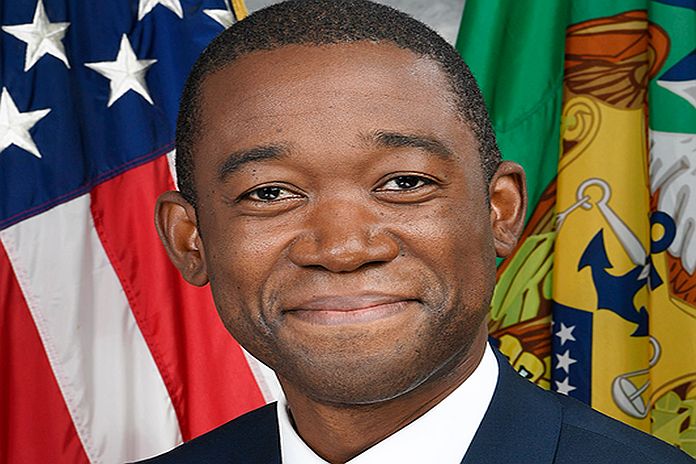– Deputy Secretary of the Treasury Wally Adeyemo Before the Treasury Advisory Committee on Racial Equity. In our time together today, I want to talk about our work in the broader context of the Biden-Harris administration’s Investing in America agenda. I want to ask for your input and expertise as we try to think creatively about what tools we have at our disposal to advance equity in this context.
By Wally Adeyemo
Here at the Treasury Department, much of our work is guided by what Secretary Yellen calls “modern supply-side economics.” When we invest in marginalized communities that have been left behind, we not only lift them up – we make our entire country more prosperous. Our public sector investments are catalyzing major build-outs in infrastructure, clean energy, semiconductors, and biotechnology. When we place equity at the ground floor of these growing sectors, we make a down payment that will yield enormous dividends in the decades to come.
We already know that the Inflation Reduction Act is multiplying clean energy investment in areas of greatest need. According to our research, 86 percent of clean investment dollars announced since the IRA passed are in counties with below-average college graduation rates. The IRA is not only a driver of the level of investment, but of where it’s going: the share of clean investment dollars going to low-income counties rose by 10 percentage points after the passage of the IRA.
It’s critical that underserved communities have access to clean energy. But it’s also critical that they play an active role in building the new clean energy economy. Just this week, we announced with the IRS and the Department of Energy that we received more than 46,000 applications in the initial application round for a bonus credit program which creates additional incentives to construct solar and wind facilities that support low-income communities.
We specifically designed this program to ensure that the communities most impacted by energy insecurity can fully participate, initially setting aside at least half the program’s capacity for clean energy projects operated by emerging market participants or located in the areas of greatest need. And the robust demand we’ve seen from these kinds of applicants highlights how our efforts are paying off. The IRS and the department of energy received many hundreds of applications for capacity allocations from facilities in counties with persistent levels of poverty.
We’re also centering equitable access in our investments in high-speed internet infrastructure. We know that the digital divide intersects with racial inequality, and that approximately 40 percent of Black households lack access to high-speed fixed broadband. Treasury has not only awarded more than $8.5 billion for broadband, digital technology, and multi-purpose community center projects -but in accordance with our guidance, the states receiving these funds are also requiring service providers to participate in a new Affordable Connectivity Program that heavily discounts the cost of internet service.
Those are examples of where we’re digging deep, designing particular programs with equity at their core. But we’re also looking broadly: surveying the scope of what the Treasury Department does to think about how we can shape other policies and programs to equitably drive investment in the areas of greatest impact.
One example is the State Small Business Credit Initiative (SSBCI). Treasury is providing nearly $10 billion to states to increase small business’ access to capital. That includes $2.5 billion in funding and incentives to directly support underserved businesses and to jurisdictions that are successful in reaching underserved businesses.
But we know that pumping more resources into the system won’t alone bring about more equitable outcomes. We need to build out the pipeline to help workers in underserved communities enter high-growth sectors such as clean energy and semiconductor manufacturing. That’s why we recently announced a technical assistance competitive grant program through SSBCI to help very small and underserved businesses in those sectors get access to legal, accounting, and financial advisory services. And we’re working in parallel with private sector partners through the Economic Opportunity Coalition, including several first-mover companies that are committing to providing technical assistance to small and disadvantaged business in Investing in America industries.
One reason I’m proud of this effort is that it shows how we’re using our resources strategically, evaluating our programs in real time. And that is an area where your insight is incredibly valuable. We need your help to think about how we can stretch dollars further and target them more effectively.
This is a moment of major changes in the structure of our economy, and we sit at a position of great leverage to reduce the racial wealth gap and bring a new generation of Americans into the middle class. Our investments are designed to ensure that no one is left behind in this transition to a cleaner, more resilient economy your advice is invaluable to helping us deliver on this goal.





